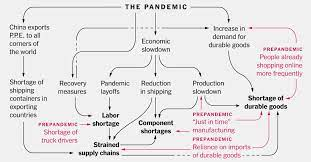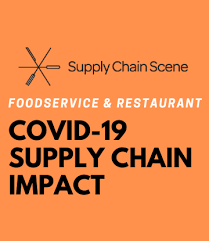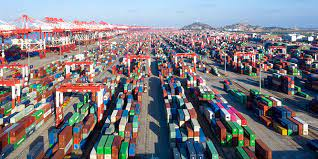The various food supply chain disruptions in 2022 have been a testament to the global devastation brought on by the COVID-19 Pandemic. Unfortunately, trends suggest they’re not going away any time soon. With these disruptions, the Pandemic has also dramatically shifted the way we shop for and consume food. As more people continue to cook and eat at home, the effects are taking their toll. Patterned with labor shortages, over-clogged ports, lack of transportation drivers, and increasingly high demands placed on farmers and food manufacturers alike, it’s no wonder the supply chain continues to face dire circumstances.
So, what does this mean for consumers, and how long can manufacturers and the American public expect these problems to persist? To answer this, let’s break down the supply chain to understand its nature better, how these disruptions manifested, and how Marvell Foods can help.

What is the Supply Chain?
The supply chain, defined in simple terms, is the large web and network of interconnected components pertaining to manufacturing, sourcing, distributing, packing, and transporting raw goods and materials to eventually reach consumers in a finished state. These components are all linked through the “chain,” and having one link out of sorts impacts, or as we have seen, disrupts the entire system.
As demand for a particular product or industry rises quickly and sharply, shortages in production, labor, and transportation can often follow. Since the supply chain will have a more difficult time adjusting to demand, consumers will be subject to delays, price increases (“inflation a new and separate issue/problem), and general shortages. When external factors occur, such as we have seen with a global pandemic, these supply chain gaps can be further exacerbated, and the resulting market effects may last much longer.
While food isn’t the only industry to ever face these disruptions, it certainly has been a focal point, most notably in the past year, as the world markets continue to recalibrate in the wake of COVID.
Identifying the Supply Chain Issues Cause
 When an intricate system like the supply chain takes even the slightest hits, returning operations to normalcy becomes a considerable challenge. The COVID-19 Pandemic is the culprit of most supply chain bottlenecks and disruptions currently accumulating around the globe. Not only did the Pandemic contribute to the reduction of industry labor, but it also forced the closure of many integral ports worldwide, which caused a sharp increase in backlogs and delays.
When an intricate system like the supply chain takes even the slightest hits, returning operations to normalcy becomes a considerable challenge. The COVID-19 Pandemic is the culprit of most supply chain bottlenecks and disruptions currently accumulating around the globe. Not only did the Pandemic contribute to the reduction of industry labor, but it also forced the closure of many integral ports worldwide, which caused a sharp increase in backlogs and delays.
These delays eventually cause a rippling effect where disruptions trickle down throughout the chain and accumulate. Think of it like this, as consumer demands keep increasing, the shortages in food products and labor have no way of keeping up. The national labor shortage in the United States has left manufacturers with a crippling little workforce. With less human resources comes the inability to properly process and distribute the output of goods. Until consumer demands diminish, which may or may not happen, depending upon the impact of inflation on the cost of goods/products, etc., when this long game of economic and production equilibrium will end is anyone’s guess.
Supply Chain Issues With Food
The supply chain issues with food encapsulate the game of catch-up most accurately. Grocery shoppers may have noticed decreased overall stock on store shelves within the last few months. Still, the real shocker seems to be the rising prices of produce, meats and poultry, and other consumables.
The Pandemic has Changed the Way Americans Eat
The Pandemic has dramatically shifted the way consumers eat. Regardless of your opinion about masks and mask mandates, the fact is millions of Americans are now resorting to home-cooked meals as restaurants were forced to either reduce their capacity OR close.
Food price costs are likely to endure until demand diminishes (which is unlikely) or pandemic-related restrictions on production and transportation have been lifted.
Who is This Hitting the Hardest?
Small businesses seem to be feeling the effects of these issues most directly and seriously. They face plenty more obstacles regarding supply chain issues. With far less leverage over their supply chain vendors compared to big-box competitors, they become more susceptible to the dangers of delays, shortages, and cost spikes; As opposed to larger companies, small, independent operators generally have less capital to keep them afloat during hard times, especially given the myriad obstacles during the Corona Virus Ciris.
Why Use Marvell Foods?
As a third-generation, family-run company, Marvell Foods has built a long history of unparalleled relationships with manufacturers, suppliers, and distributors, across the United States. We have earned a national reputation as a leading secondary and surplus foods buyer during more than thirty years in the food industry. Marvell Foods specializes in working with close-coded food, expired food, excess inventory, and even salvage foods. Our exceptional network of national contacts at all levels of the food industry allows us to source products at the best possible price and offer them to our clients: retailers – wholesalers – further processors, among others, at highly competitive prices.

